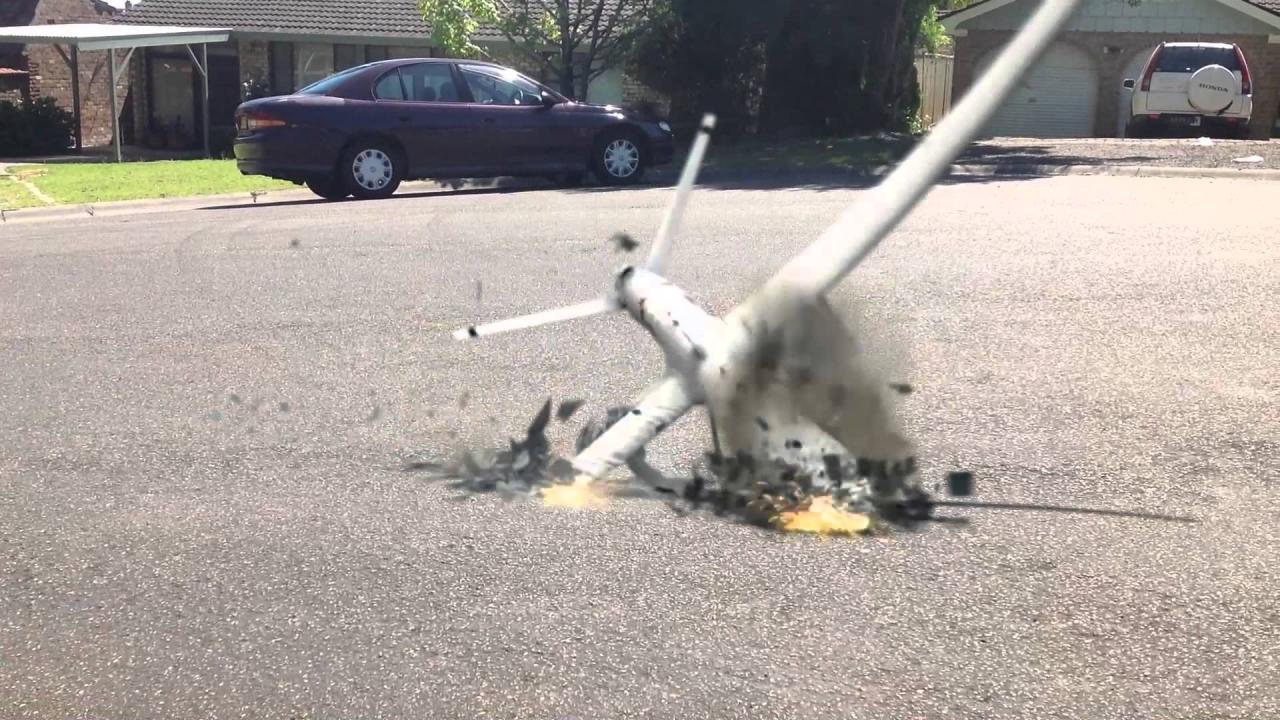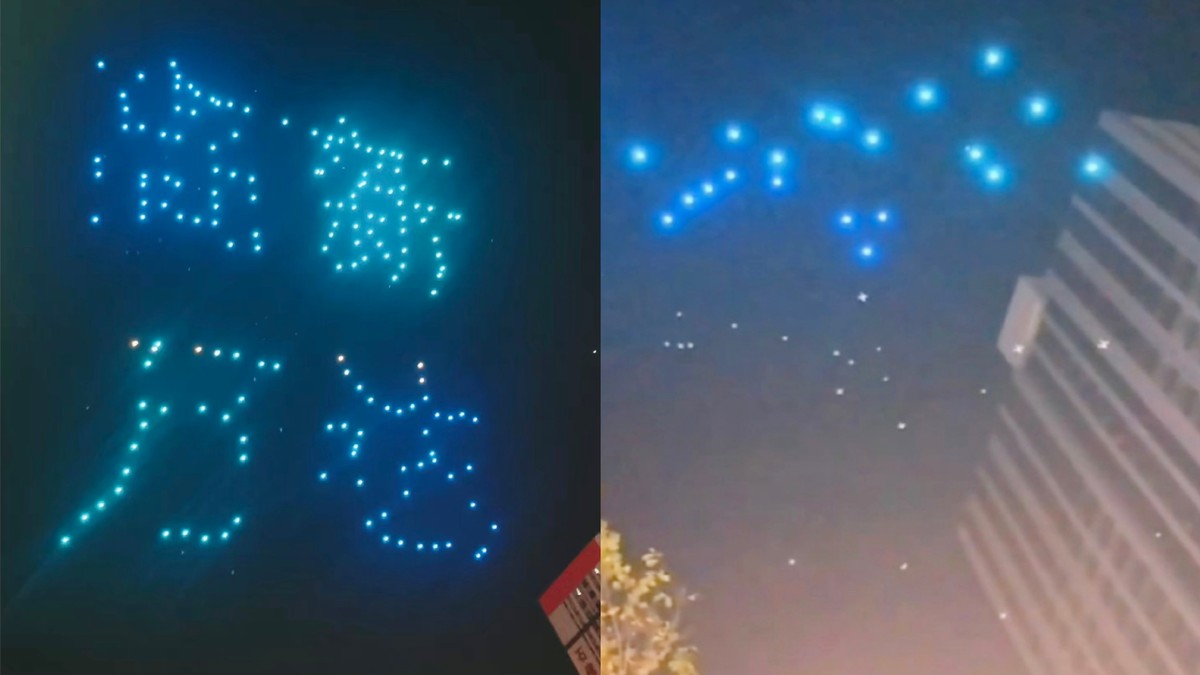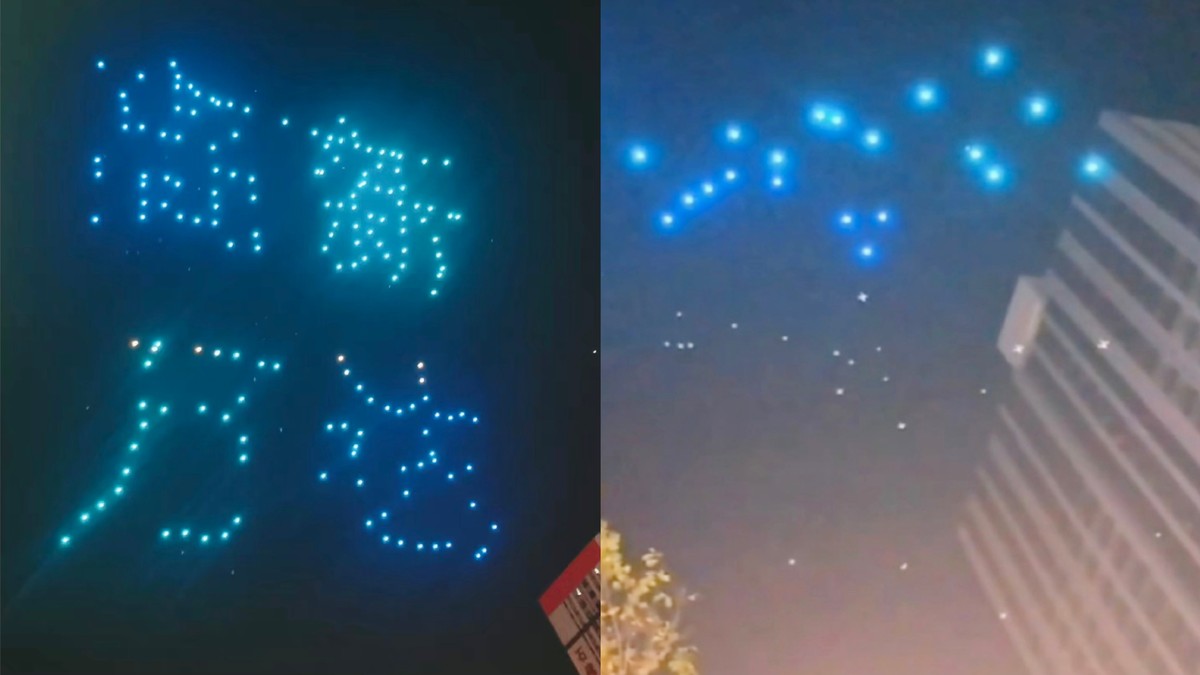Drone show crash—it sounds dramatic, right? And it can be. These spectacular displays of coordinated aerial acrobatics rely on flawless technology and precise execution. But what happens when things go wrong? This guide dives into the various reasons why drone shows sometimes end abruptly, exploring everything from technical glitches and pilot error to the impact of weather and unforeseen obstacles.
We’ll examine the causes, consequences, and crucial safety measures needed to prevent these high-stakes mishaps.
Understanding the complexities of drone show crashes is vital for ensuring the safety of both the equipment and the audience. We’ll explore preventative measures, investigate common failure points, and examine post-crash procedures. By the end, you’ll have a clearer understanding of the challenges and solutions involved in keeping these dazzling aerial shows safe and successful.
Drone show crashes are unfortunately becoming more common, highlighting the complexities of coordinating these spectacular displays. A recent example of a technical issue causing problems was the orlando drone show malfunction , which serves as a reminder of the importance of rigorous testing and safety protocols. Understanding these malfunctions helps improve the safety and reliability of future drone shows, minimizing the risk of crashes.
Drone Show Crash Analysis: A Comprehensive Overview
Drone shows, while visually stunning, present significant safety challenges. Understanding the various factors contributing to crashes is crucial for improving safety protocols and minimizing risks. This article provides a detailed analysis of drone show crashes, covering causes, technical aspects, human factors, environmental influences, safety regulations, and post-crash investigation procedures.
Types of Drone Show Crashes

Drone show crashes can be classified based on their root causes. This classification helps in identifying areas for improvement in design, operation, and safety regulations.
| Crash Type | Frequency | Common Causes | Potential Mitigation Strategies |
|---|---|---|---|
| Software Malfunction | High (estimated) | Software bugs, firmware issues, GPS glitches | Rigorous software testing, redundancy systems, regular updates |
| Hardware Failure | Moderate | Motor failure, battery issues, sensor malfunctions | High-quality components, regular maintenance, pre-flight checks |
| Pilot Error | High (estimated) | Inadequate training, poor judgment, distraction | Comprehensive training programs, simulator practice, standardized procedures |
| Environmental Factors | Moderate | Strong winds, rain, electromagnetic interference | Weather monitoring, contingency plans, careful site selection |
Technical Aspects of Drone Show Crashes

Several technical issues can contribute significantly to drone crashes. Understanding these issues is critical for designing more robust and reliable drone systems.
- GPS Signal Loss: Loss of GPS signal can lead to disorientation and uncontrolled flight. Using multiple GPS modules and inertial measurement units (IMUs) can mitigate this.
- Communication Failures: Radio frequency interference or range limitations can disrupt communication between the pilot and the drone, leading to loss of control. Utilizing redundant communication links and appropriate frequency bands is crucial.
- Battery Issues: Low battery voltage or sudden battery failure can cause unexpected power loss and a crash. Implementing battery monitoring systems and using high-quality batteries are vital.
- Flight Control Software: Bugs or errors in flight control software can cause unpredictable drone behavior. Thorough testing and validation of flight control software are essential.
- Hardware Failure Points: Potential failure points include motors, ESCs (Electronic Speed Controllers), propellers, and flight controllers. Regular maintenance and inspections can help detect potential problems before they lead to a crash.
Human Factors in Drone Show Crashes
Human error plays a significant role in drone show accidents. Improving pilot training and implementing robust safety protocols are crucial for reducing human-related crashes.
- Pilot Skill and Training: Inadequate training can lead to poor decision-making and increase the risk of accidents.
- Pre-flight Checklists and Maintenance: Thorough pre-flight checks and regular maintenance are essential to prevent technical failures.
- Best Practices for Drone Show Operators: These include risk assessments, weather monitoring, emergency procedures, and communication protocols.
Environmental Factors in Drone Show Crashes
Adverse weather conditions and unexpected environmental obstacles can significantly impact drone flight safety.
Drone show crashes are becoming increasingly common, highlighting the need for better safety protocols. One incident that made headlines involved a drone crash in Paris , which raised serious concerns about the technology’s reliability in large-scale displays. Understanding these failures is crucial for preventing future drone show crashes and ensuring the safe integration of drones into public events.
Weather Conditions: Strong winds, heavy rain, and extreme temperatures can affect drone stability and performance. A flowchart would guide operators on making informed decisions based on weather forecasts and real-time conditions.
Environmental Obstacles: Unexpected obstacles such as birds, buildings, or other structures can cause mid-air collisions. Careful site selection and obstacle avoidance systems are crucial.
Electromagnetic Interference (EMI): EMI from other electronic devices can disrupt drone navigation and control systems. Operators should be aware of potential sources of EMI and take steps to minimize interference.
Safety Protocols and Regulations, Drone show crash

Different countries and regions have varying safety regulations and protocols for drone shows. A consistent global standard is needed to ensure the safety of these increasingly popular events.
| Risk Factor | Likelihood | Severity | Mitigation Strategy |
|---|---|---|---|
| Software malfunction | Medium | High | Redundant systems, rigorous testing |
| Pilot error | High | High | Comprehensive training, standardized procedures |
| Adverse weather | Medium | Medium | Weather monitoring, contingency plans |
Insurance and liability are critical aspects of mitigating the risks associated with drone shows. Operators should have adequate insurance coverage to protect themselves and others from potential losses.
Post-Crash Investigation and Analysis
A thorough investigation is essential after a drone show crash to identify the root cause and implement preventative measures.
Drone shows are awesome, right? But sometimes things go wrong, leading to a spectacular – and sometimes costly – drone show crash. Check out this article for some insights into what can happen: drone show crash. Understanding the potential pitfalls helps ensure future shows are safe and successful, minimizing the chances of another drone show crash.
- Data Recovery and Analysis: Flight logs, video footage, and witness statements are crucial sources of information.
- Documentation: Detailed documentation of the accident scene, drone components, and operational procedures is crucial.
- Immediate Post-Crash Steps: Secure the crash site, preserve evidence, and report the incident to relevant authorities.
Summary
Drone show crashes, while infrequent, highlight the critical need for rigorous safety protocols, advanced technology, and well-trained operators. From meticulous pre-flight checks and robust contingency plans to thorough post-incident investigations, every aspect of a drone show demands attention to detail. By learning from past incidents and proactively addressing potential risks, we can strive towards a future where these breathtaking spectacles continue to captivate audiences without incident.
General Inquiries
What is the average cost of a drone show crash?
Costs vary wildly depending on the scale of the show, the damage to drones, and any injuries or property damage. It could range from thousands to hundreds of thousands of dollars.
How often do drone show crashes occur?
Precise statistics are scarce due to inconsistent reporting. However, the frequency is low relative to the number of shows, but any crash is significant.
What kind of insurance is needed for drone shows?
Comprehensive liability insurance is essential, covering potential damage to property, injuries, and the cost of replacing drones.
Are there any international standards for drone show safety?
While international standards are developing, regulations often vary significantly by country or region. Operators must comply with local laws and guidelines.
